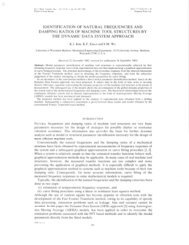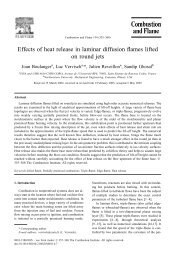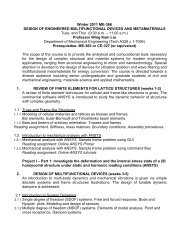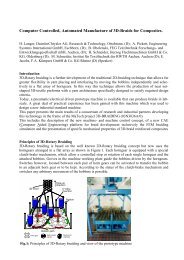A Simplified Multivariant SMA Model Based on Invariant Plane ...
A Simplified Multivariant SMA Model Based on Invariant Plane ...
A Simplified Multivariant SMA Model Based on Invariant Plane ...
Create successful ePaper yourself
Turn your PDF publications into a flip-book with our unique Google optimized e-Paper software.
the original model and simplified models respectively. These results show that both<br />
models are c<strong>on</strong>sistent with the main trends of stress-strain relati<strong>on</strong>ship in <str<strong>on</strong>g>SMA</str<strong>on</strong>g>s.<br />
However, several significant discrepancies can be seen between the original model<br />
predicti<strong>on</strong>s (Figure 6) and the experimental data (Figure 5). The magnitude of the<br />
transformati<strong>on</strong> stresses are nearly three times that of the experimental results; two of the<br />
orientati<strong>on</strong>s are unable to recover the strain pseudoelastically up<strong>on</strong> unloading; and the<br />
moduli differences are clearly missing due to the isotropy assumpti<strong>on</strong>. With a move to<br />
the simplified model (Figure 7), the results are strikingly improved and very close to the<br />
experimental results in terms of transformati<strong>on</strong> stresses, strains and moduli. Note that the<br />
parameters F c and B for the model were determined from the experimental result for T3<br />
and there are no other free parameters in the model. Using values from the literature for<br />
the anisotropic elastic c<strong>on</strong>stants (see Table 2b), the ratio of maximum to minimum<br />
moduli for the three orientati<strong>on</strong>s shown is predicted to be 6.9, while the experimental<br />
value is 5.9.<br />
It should be menti<strong>on</strong>ed that the original <str<strong>on</strong>g>Multivariant</str<strong>on</strong>g> model often predicted appearance of<br />
multiple variants: for the simulati<strong>on</strong>s here the variants active in cases T1, T2 and T3 were<br />
(17 & 18), (6 & 15) and (6, 8, 13, 15, 18, & 19) respectively. Experimentally however, a<br />
final product of <strong>on</strong>e variant is expected in most cases, although in directi<strong>on</strong>s with special<br />
symmetry several variants are sometimes seen (Lexcellent et al., 1996). With the<br />
simplified <str<strong>on</strong>g>Multivariant</str<strong>on</strong>g> model, the variants predicted in cases T1, T2 and T3 are (17 &<br />
18), (6) and (8) respectively. Since all the materials simulated have 18R structure, the<br />
variant order is same as Saburi and Wayman (Saburi et al., 1980) except here we identify<br />
1(+) as 1, 1(-) as 2, …, and 6'(-) as 24. Angles between the tensi<strong>on</strong> directi<strong>on</strong> and the<br />
intersecti<strong>on</strong> directi<strong>on</strong> of the habit plane and the sample surface are also measured in the<br />
experiment and compared to predicti<strong>on</strong> based <strong>on</strong> Type I or Type II twinning for a 2H<br />
system (Shield, 1995). Since the material is at a temperature 17° higher than the Af<br />
(23°C), the CuAlNi material should transform between the parent and a 18R martensite<br />
phase which does not have twinning substructure (Otsuka and Shimizu, 1981; Sun et al.,<br />
1999). Therefore using lattice parameters (table 2b), we calculated the habit plane<br />
16






